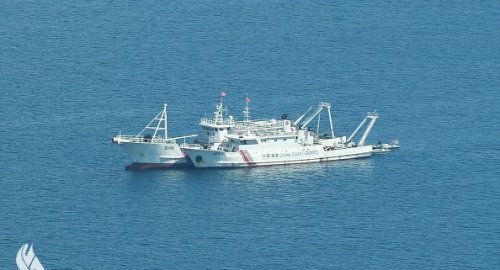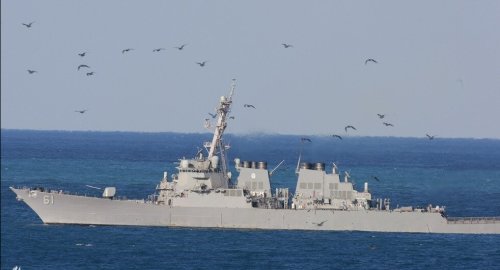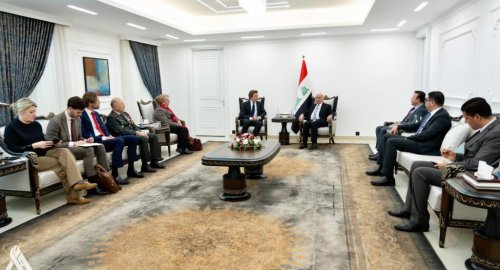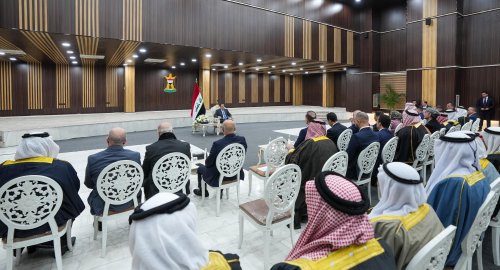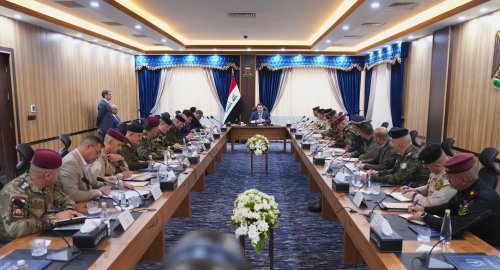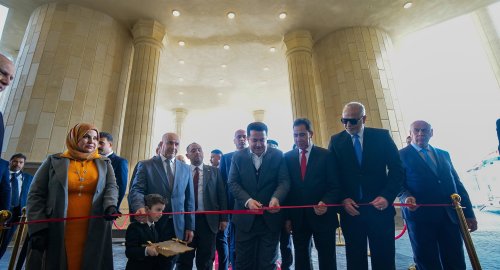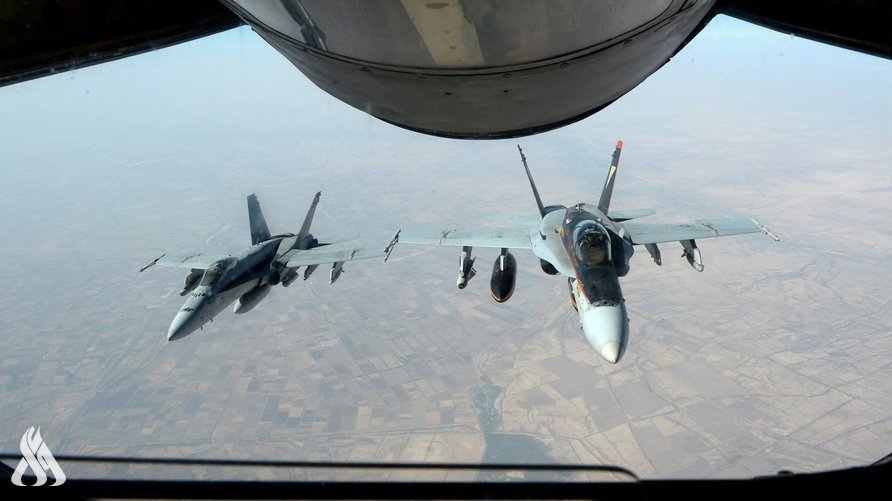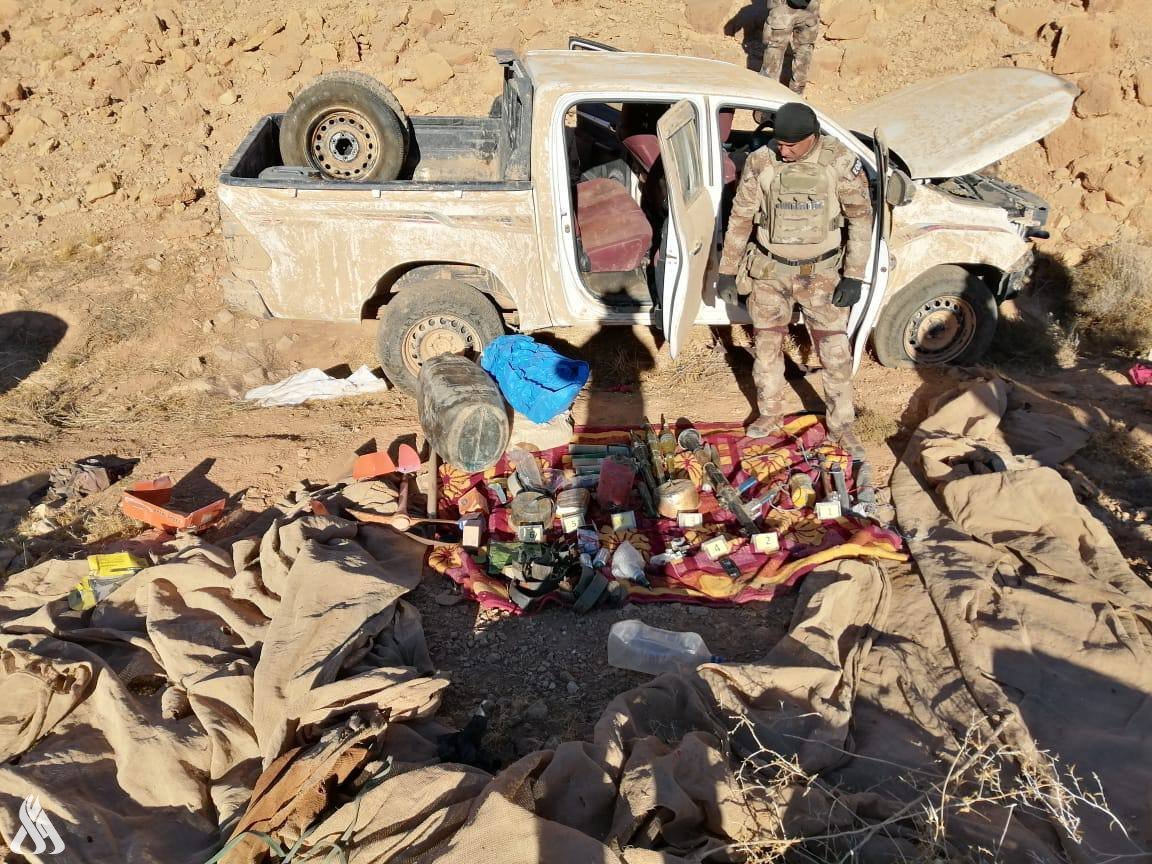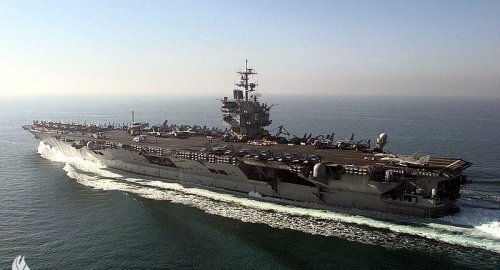
U.S. deploys three carriers in Asia, maintaining China focus

- 1-02-2024, 10:26
INA- sources
The U.S. military has doubled down on its effort to deter China and North Korea by deploying three aircraft carriers to the western Pacific, despite growing concerns over the potential for a wider conflict in the Middle East.
The U.S. Navy allowed reporters from a few media outlets including Nikkei Asia to board aircraft carrier USS Carl Vinson for a training exercise with Japan in the Philippine Sea on Wednesday.
The Carl Vinson sailed in formation with another U.S. carrier, the USS Theodore Roosevelt, and the Japanese helicopter destroyer JS Ise. Nine other vessels also participated in the exercise, according to a statement from the Japan Maritime Self-Defense Force.
USS Ronald Reagan, the only forward-based aircraft carrier stationed in Yokosuka in Japan, is currently at its home port, meaning that three out of eleven U.S. carriers are in the Indo-Pacific. According to the U.S. Naval Institute, the occasion appears to be the first time in two years that three U.S. carriers have been positioned near the so-called first island chain, connecting Okinawa and Taiwan to the Philippines.
"What I can say is that the carrier strike group is ready to execute the full range of operations," Rear Adm. Carlos Sardiello, commander of the Carl Vinson strike group, told reporters. "These training opportunities where we can rapidly aggregate these large, capable, agile platforms here in the Philippine Sea is a great rehearsal opportunity for us," he added.
According to a U.S. Navy official, a Chinese naval spy ship was spotted 5 to 10 miles away from the Carl Vinson. The reconnaissance vessel was believed to be collecting intelligence on U.S. and Japanese capabilities and operations during the exercises.
"I think the waterways are very congested just with normal traffic. But having [Chinese navy] ships out here with us doesn't concern us," said Rear Adm. Christopher Alexander, who leads the Theodore Roosevelt strike group.
"We are here, right now, to strengthen our relationships with our allies and partners, and to make it known that we can respond to any crisis or contingency that's happening in the western Pacific," Alexander said.
In November, the U.S. Navy also extended an invitation to some outlets to observe carrier drills in the Philippine Sea, indicating that it seeks more public attention on its operations in the Indo-Pacific.
While plans to deploy carriers are believed to have been finalized months ago, a series of demonstrations has served as a reminder that the military is not distracted from the Indo-Pacific, at a time when a regional war could erupt in the Middle East.
"It is a deterrence message," said Jeffrey Hornung, a senior political scientist at the Rand Cooperation. "The messaging will continue regardless of what conditions are like in other parts of the world because China is a pacing threat," he said.
"Given the war in Europe and the prospect of a broader conflict in the Middle East, the Navy knows this is a critical time to bolster deterrence and reassure allies that the United States is ready to act should its interests be threatened," said Patrick Cronin, Asia-Pacific security chair at the Hudson Institute.
While aircraft carriers are only a part of the entire capabilities of the U.S. military, the current arrangement differs from that of 2021 when the U.S. withdrew from Afghanistan.
USS Ronald Reagan assisted the operations through the Arabian Sea, in a rare relocation from the Indo-Pacific to the Middle East. Despite U.S. President Joe Biden's administration making China a top priority in its national security strategy, this move created a carrier vacuum in the Indo-Pacific for months.
Rob Wittman, a Republican House representative from Virginia and vice chair of the House Armed Service Committee, told Nikkei Asia that "China is very opportunistic and they are looking at what efforts we are putting in the Indo-Pacific."
"We know that presence there is a deterrence, capability there is a deterrence, and we don't want to lose focus on that, because deterring a temptation by the Chinese to take Taiwan by force is something that we need to keep in mind every day," Wittman said in a phone interview Wednesday.
Taiwan's Ministry of National Defense said on Friday that it had detected 33 Chinese military aircraft around Taiwan over the last 24 hours, in a sign of escalating pressure following a U.S. bipartisan congressional delegation to the island.
China has vowed to unify with the self-governed island and has not ruled out the use of force to that end. Beijing has called China skeptic Lai Ching-te of Taiwan's ruling Progressive Democratic Party, who was elected as Taiwan's next president in mid-January, a threat to peace.
North Korea is another concern for the U.S. as Pyongyang continues to launch missiles and deepen defense ties with Russia.
"We know that the North Koreans continue to pursue advanced capabilities, including ballistic missile capabilities, that they want to be able to achieve long-range outcomes," John Kirby, National Security Council spokesman, warned last week.
"Obviously, we're going to do what we have to do to make sure we can protect the United States, protect our allies and partners," Kirby noted, adding that Washington will seek more trilateral cooperation with Japan and South Korea.
source: Nikkei Asia
US Central Command: We killed ISIS terrorist leader Abu Yusuf in Syria
- International
- 24/12/20
Liverpool compete with Real Madrid to sign Olympique Lyonnais star
- Security
- 24/12/19
ISC, ADX discuss Strengthening Economic Ties
- Economy
- 24/12/16
Iraq assumes presidency of Arab Investment Company’s Executive Board
- Economy
- 24/12/17

